Top Data Collection Tools: Methods, Process, and Types
Top Data Collection Tools: Methods, Process, and Types
Top Data Collection Tools: Methods, Process, and Types
Unleash the power of data! Explore top tools for collecting data, from surveys to forms. Learn best practices and methods to streamline your data collection process.
Unleash the power of data! Explore top tools for collecting data, from surveys to forms. Learn best practices and methods to streamline your data collection process.
Unleash the power of data! Explore top tools for collecting data, from surveys to forms. Learn best practices and methods to streamline your data collection process.



Imagine this:
You're about to launch a brand new product, one you poured your heart and soul into. The marketing campaign is slick, the packaging is perfect, but there's a nagging worry in the back of your mind.
Do people actually want this?
Fast forward a few months, and your worst fear is realized. The product sits gathering dust on shelves, a monument to good intentions and bad data. Unfortunately, this scenario plays out all too often for businesses that fail to prioritize data collection.
Data collection provides the crucial insights you need to navigate the ever-changing market landscape. A recent Forbes report highlights this perfectly, stating that 80% of businesses consider data a cornerstone of their decision-making process.
But the cost of ignoring this valuable resource can be astronomical. Gartner, a leading research firm, found that poor data quality costs businesses $12.9 million annually.
That's right, it's a lot!
Flying blind to customer needs can sink your business. Data collection tool are your flight instruments, providing real-time insights to guide smart decisions.
Introduction

Let's start by understanding what data collection actually means. It's the process of gathering required information from various sources for a definite purpose. This information can be anything from customer feedback and survey responses to sales figures and website traffic data.
Why is accurate data collection so crucial? Imagine Data collection empowers businesses and research institutions to move away from assumptions and instead, adopt data-driven strategies that are more likely to succeed.
Let’s look at the example!
Imagine a clothing store owner who relies solely on instinct to stock their shelves. They might miss out on popular trends or have an excess of unpopular styles. But by using data collection tools to gather customer preferences and analyze sales trends, they can make informed decisions about their inventory, ultimately boosting customer satisfaction and sales.
You cannot just make important business decisions based on guesswork or outdated information. It's a recipe for disaster!
For a deeper dive into the concept of data capture and its vital role in business success, check out our article "What is Data Capture and Why Does Your Business Need It?"
What are Data Collection Tools?
Data collection tools are software applications or online platforms designed to streamline information gathering. These tools offer various features that make data collection efficient, organized, and error-free.
Two main types of data can be collected:
Qualitative Data: This refers to descriptive information, such as opinions, feelings, and experiences. It's often gathered through interviews, focus groups, or open-ended survey questions.
Quantitative Data: This is numerical data that can be measured and analyzed statistically. Surveys, sales figures, and website traffic data are all examples of quantitative data.
Criteria for Evaluating Data Collection Tools

Choosing the right data collection tool is crucial for your success. Here are some key factors to consider:
Type of Data
Does the tool support collecting the specific type of data you need (qualitative, quantitative, or both)?Data Collection Methods
Does the tool offer the data collection methods you plan to use (surveys, interviews, etc.)?Ease of Use
Is the tool user-friendly and intuitive, even for those without technical expertise?Customization and Flexibility
Can you customize the tool to fit your specific needs, such as creating unique surveys or forms?Integration Capabilities
Does the tool integrate with other software applications you use, such as CRM or marketing automation tools?Cost-Effectiveness
Does the tool fit your budget? Consider pricing models, including free trials and subscription options.Security and Compliance
Does the tool ensure the security of your data and comply with relevant data privacy regulations?Data Analysis Features
Does the tool offer basic data analysis features or integrations with data analysis software?Technical Support and Training
Does the company providing the tool offer adequate technical support and training resources?Scalability
Can the tool grow with your needs? Will it be able to handle a larger volume of data as your business expands?
Types of Data Collection
Data collection, the art of gathering valuable information, has two primary and secondary flavors. Understanding these approaches is crucial to choosing the right method for your needs.
Primary Data Collection
Primary data collection is akin to this – you're the one gathering information directly from the source. Here are some of the exciting methods you can employ:
Interviews: Engage in in-depth conversations, one-on-one or in groups (focus groups), to gain detailed qualitative data on opinions, experiences, and motivations.
Surveys: Cast a wider net by creating questionnaires to gather quantitative data from a larger sample size. This allows you to analyze trends and identify commonalities.
Observation: Become a fly on the wall, observing user behavior in real-world settings. This method is particularly valuable for understanding user experience (UX) and identifying pain points.
Secondary Data Collection
Secondary data collection involves utilizing existing data gathered by others. This approach can be a time and cost-effective way to gain valuable insights, especially for initial research or background information. Here's where you can find these hidden gems:
Government Reports: A treasure trove of demographic, economic, and social data, often freely available online.
Industry Publications: Industry reports, white papers, and research studies offer valuable insights into specific market trends and competitor analysis.
Sales Records: Your own internal data can be a goldmine, revealing customer purchase history, buying patterns, and product preferences.
Top Data Collection Tools Overview
JotForm

Renowned for its user-friendliness, JotForm is a versatile platform that caters to a wide range of data collection needs. JotForm offers a variety of pre-built form templates and drag-and-drop functionality, making it easy for anyone to create surveys, quizzes, registration forms, and more.
This user-centric approach allows even those without technical expertise to harness the power of data collection.
SurveySparrow

This innovative tool shines in the realm of mobile data collection. It helps in gathering real-time customer feedback through engaging surveys and polls, whether they're on the go at a conference or browsing at home on their tablets.
SurveySparrow boasts a user-friendly interface and features like branching logic and skip logic, allowing you to create dynamic surveys that adapt to user responses for a more personalized experience.
This can lead to higher completion rates and more valuable data.
Metaforms
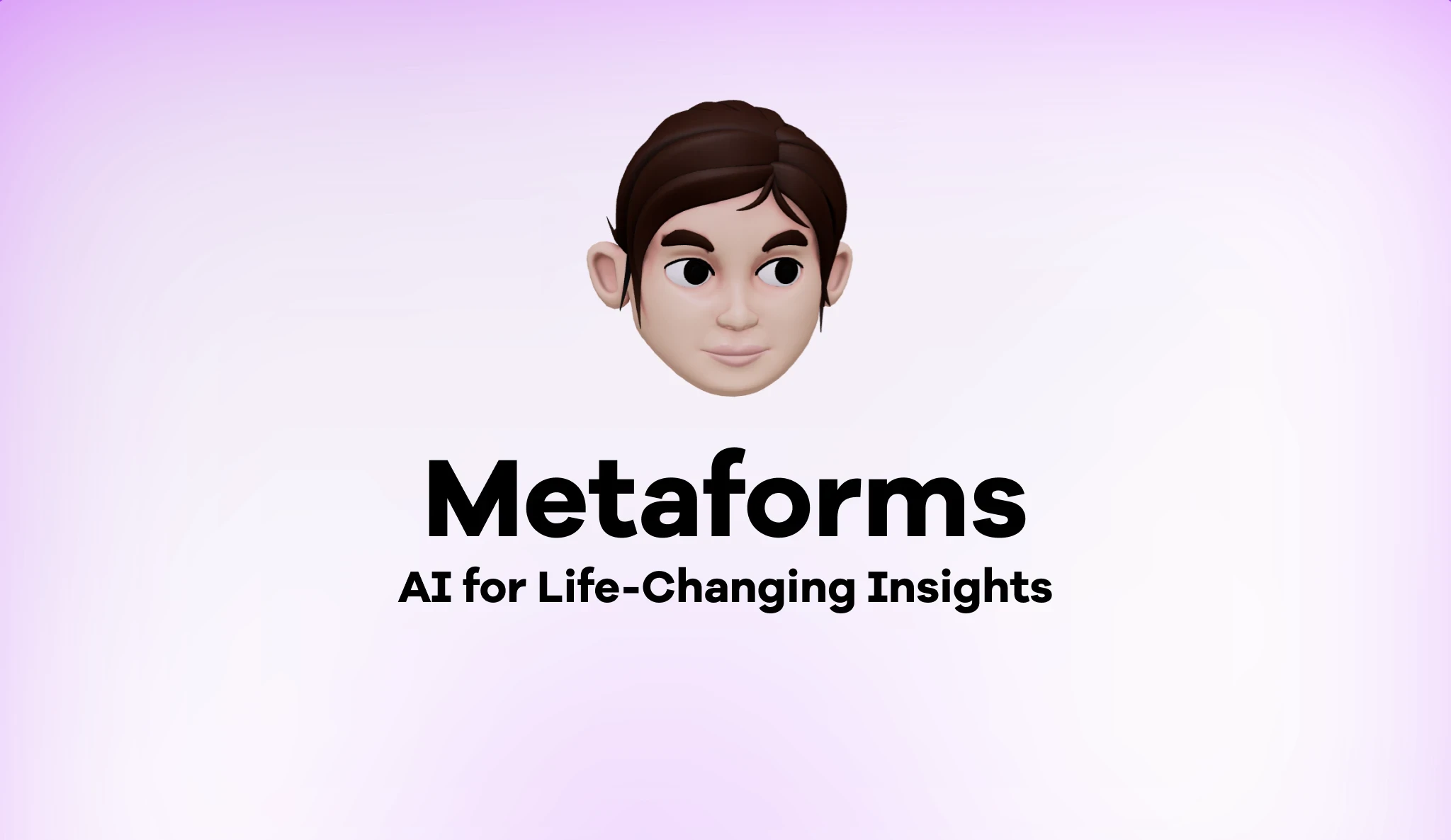
Introducing the future of data collection! Metaforms leverages the power of Artificial Intelligence (AI) to create intelligent forms that go beyond basic data gathering.
These forms personalize questions based on previous responses, encourage genuine conversation-like interactions, and even adapt follow-up questions based on user input.
This translates to higher engagement rates, richer data collection, and ultimately, deeper customer insights.
Fulcrum

Customization is the name of the game with Fulcrum. Think of it as a Swiss Army Knife for data collection, allowing you to craft bespoke forms specifically tailored to your needs.
This is particularly advantageous for businesses that require data collection in remote locations or offline environments.
Fulcrum empowers you to build forms with features like image capture, location tracking, and offline data storage, ensuring seamless data collection even without an internet connection.
FastField

Sometimes, simplicity is key. FastField is your go-to tool for collecting and sending basic data quickly and efficiently.
Think of it as a streamlined option for gathering essential information without the need for complex features. FastField is ideal for situations where you need to collect short snippets of data, such as customer feedback on a new product launch or event registration details.
Kobo Toolbox

This purpose-built tool is a champion for the humanitarian aid sector. Kobo Toolbox provides mobile data gathering tools specifically designed for resource-limited settings.
Its offline functionality and user-friendly interface make it easy for aid workers and volunteers to collect vital data on the ground, even in areas with limited internet connectivity.
This empowers organizations to make informed decisions based on real-time data, ultimately leading to more effective aid distribution and improved outcomes.
Imagine this:
You're about to launch a brand new product, one you poured your heart and soul into. The marketing campaign is slick, the packaging is perfect, but there's a nagging worry in the back of your mind.
Do people actually want this?
Fast forward a few months, and your worst fear is realized. The product sits gathering dust on shelves, a monument to good intentions and bad data. Unfortunately, this scenario plays out all too often for businesses that fail to prioritize data collection.
Data collection provides the crucial insights you need to navigate the ever-changing market landscape. A recent Forbes report highlights this perfectly, stating that 80% of businesses consider data a cornerstone of their decision-making process.
But the cost of ignoring this valuable resource can be astronomical. Gartner, a leading research firm, found that poor data quality costs businesses $12.9 million annually.
That's right, it's a lot!
Flying blind to customer needs can sink your business. Data collection tool are your flight instruments, providing real-time insights to guide smart decisions.
Introduction

Let's start by understanding what data collection actually means. It's the process of gathering required information from various sources for a definite purpose. This information can be anything from customer feedback and survey responses to sales figures and website traffic data.
Why is accurate data collection so crucial? Imagine Data collection empowers businesses and research institutions to move away from assumptions and instead, adopt data-driven strategies that are more likely to succeed.
Let’s look at the example!
Imagine a clothing store owner who relies solely on instinct to stock their shelves. They might miss out on popular trends or have an excess of unpopular styles. But by using data collection tools to gather customer preferences and analyze sales trends, they can make informed decisions about their inventory, ultimately boosting customer satisfaction and sales.
You cannot just make important business decisions based on guesswork or outdated information. It's a recipe for disaster!
For a deeper dive into the concept of data capture and its vital role in business success, check out our article "What is Data Capture and Why Does Your Business Need It?"
What are Data Collection Tools?
Data collection tools are software applications or online platforms designed to streamline information gathering. These tools offer various features that make data collection efficient, organized, and error-free.
Two main types of data can be collected:
Qualitative Data: This refers to descriptive information, such as opinions, feelings, and experiences. It's often gathered through interviews, focus groups, or open-ended survey questions.
Quantitative Data: This is numerical data that can be measured and analyzed statistically. Surveys, sales figures, and website traffic data are all examples of quantitative data.
Criteria for Evaluating Data Collection Tools

Choosing the right data collection tool is crucial for your success. Here are some key factors to consider:
Type of Data
Does the tool support collecting the specific type of data you need (qualitative, quantitative, or both)?Data Collection Methods
Does the tool offer the data collection methods you plan to use (surveys, interviews, etc.)?Ease of Use
Is the tool user-friendly and intuitive, even for those without technical expertise?Customization and Flexibility
Can you customize the tool to fit your specific needs, such as creating unique surveys or forms?Integration Capabilities
Does the tool integrate with other software applications you use, such as CRM or marketing automation tools?Cost-Effectiveness
Does the tool fit your budget? Consider pricing models, including free trials and subscription options.Security and Compliance
Does the tool ensure the security of your data and comply with relevant data privacy regulations?Data Analysis Features
Does the tool offer basic data analysis features or integrations with data analysis software?Technical Support and Training
Does the company providing the tool offer adequate technical support and training resources?Scalability
Can the tool grow with your needs? Will it be able to handle a larger volume of data as your business expands?
Types of Data Collection
Data collection, the art of gathering valuable information, has two primary and secondary flavors. Understanding these approaches is crucial to choosing the right method for your needs.
Primary Data Collection
Primary data collection is akin to this – you're the one gathering information directly from the source. Here are some of the exciting methods you can employ:
Interviews: Engage in in-depth conversations, one-on-one or in groups (focus groups), to gain detailed qualitative data on opinions, experiences, and motivations.
Surveys: Cast a wider net by creating questionnaires to gather quantitative data from a larger sample size. This allows you to analyze trends and identify commonalities.
Observation: Become a fly on the wall, observing user behavior in real-world settings. This method is particularly valuable for understanding user experience (UX) and identifying pain points.
Secondary Data Collection
Secondary data collection involves utilizing existing data gathered by others. This approach can be a time and cost-effective way to gain valuable insights, especially for initial research or background information. Here's where you can find these hidden gems:
Government Reports: A treasure trove of demographic, economic, and social data, often freely available online.
Industry Publications: Industry reports, white papers, and research studies offer valuable insights into specific market trends and competitor analysis.
Sales Records: Your own internal data can be a goldmine, revealing customer purchase history, buying patterns, and product preferences.
Top Data Collection Tools Overview
JotForm

Renowned for its user-friendliness, JotForm is a versatile platform that caters to a wide range of data collection needs. JotForm offers a variety of pre-built form templates and drag-and-drop functionality, making it easy for anyone to create surveys, quizzes, registration forms, and more.
This user-centric approach allows even those without technical expertise to harness the power of data collection.
SurveySparrow

This innovative tool shines in the realm of mobile data collection. It helps in gathering real-time customer feedback through engaging surveys and polls, whether they're on the go at a conference or browsing at home on their tablets.
SurveySparrow boasts a user-friendly interface and features like branching logic and skip logic, allowing you to create dynamic surveys that adapt to user responses for a more personalized experience.
This can lead to higher completion rates and more valuable data.
Metaforms

Introducing the future of data collection! Metaforms leverages the power of Artificial Intelligence (AI) to create intelligent forms that go beyond basic data gathering.
These forms personalize questions based on previous responses, encourage genuine conversation-like interactions, and even adapt follow-up questions based on user input.
This translates to higher engagement rates, richer data collection, and ultimately, deeper customer insights.
Fulcrum

Customization is the name of the game with Fulcrum. Think of it as a Swiss Army Knife for data collection, allowing you to craft bespoke forms specifically tailored to your needs.
This is particularly advantageous for businesses that require data collection in remote locations or offline environments.
Fulcrum empowers you to build forms with features like image capture, location tracking, and offline data storage, ensuring seamless data collection even without an internet connection.
FastField

Sometimes, simplicity is key. FastField is your go-to tool for collecting and sending basic data quickly and efficiently.
Think of it as a streamlined option for gathering essential information without the need for complex features. FastField is ideal for situations where you need to collect short snippets of data, such as customer feedback on a new product launch or event registration details.
Kobo Toolbox

This purpose-built tool is a champion for the humanitarian aid sector. Kobo Toolbox provides mobile data gathering tools specifically designed for resource-limited settings.
Its offline functionality and user-friendly interface make it easy for aid workers and volunteers to collect vital data on the ground, even in areas with limited internet connectivity.
This empowers organizations to make informed decisions based on real-time data, ultimately leading to more effective aid distribution and improved outcomes.
Imagine this:
You're about to launch a brand new product, one you poured your heart and soul into. The marketing campaign is slick, the packaging is perfect, but there's a nagging worry in the back of your mind.
Do people actually want this?
Fast forward a few months, and your worst fear is realized. The product sits gathering dust on shelves, a monument to good intentions and bad data. Unfortunately, this scenario plays out all too often for businesses that fail to prioritize data collection.
Data collection provides the crucial insights you need to navigate the ever-changing market landscape. A recent Forbes report highlights this perfectly, stating that 80% of businesses consider data a cornerstone of their decision-making process.
But the cost of ignoring this valuable resource can be astronomical. Gartner, a leading research firm, found that poor data quality costs businesses $12.9 million annually.
That's right, it's a lot!
Flying blind to customer needs can sink your business. Data collection tool are your flight instruments, providing real-time insights to guide smart decisions.
Introduction

Let's start by understanding what data collection actually means. It's the process of gathering required information from various sources for a definite purpose. This information can be anything from customer feedback and survey responses to sales figures and website traffic data.
Why is accurate data collection so crucial? Imagine Data collection empowers businesses and research institutions to move away from assumptions and instead, adopt data-driven strategies that are more likely to succeed.
Let’s look at the example!
Imagine a clothing store owner who relies solely on instinct to stock their shelves. They might miss out on popular trends or have an excess of unpopular styles. But by using data collection tools to gather customer preferences and analyze sales trends, they can make informed decisions about their inventory, ultimately boosting customer satisfaction and sales.
You cannot just make important business decisions based on guesswork or outdated information. It's a recipe for disaster!
For a deeper dive into the concept of data capture and its vital role in business success, check out our article "What is Data Capture and Why Does Your Business Need It?"
What are Data Collection Tools?
Data collection tools are software applications or online platforms designed to streamline information gathering. These tools offer various features that make data collection efficient, organized, and error-free.
Two main types of data can be collected:
Qualitative Data: This refers to descriptive information, such as opinions, feelings, and experiences. It's often gathered through interviews, focus groups, or open-ended survey questions.
Quantitative Data: This is numerical data that can be measured and analyzed statistically. Surveys, sales figures, and website traffic data are all examples of quantitative data.
Criteria for Evaluating Data Collection Tools

Choosing the right data collection tool is crucial for your success. Here are some key factors to consider:
Type of Data
Does the tool support collecting the specific type of data you need (qualitative, quantitative, or both)?Data Collection Methods
Does the tool offer the data collection methods you plan to use (surveys, interviews, etc.)?Ease of Use
Is the tool user-friendly and intuitive, even for those without technical expertise?Customization and Flexibility
Can you customize the tool to fit your specific needs, such as creating unique surveys or forms?Integration Capabilities
Does the tool integrate with other software applications you use, such as CRM or marketing automation tools?Cost-Effectiveness
Does the tool fit your budget? Consider pricing models, including free trials and subscription options.Security and Compliance
Does the tool ensure the security of your data and comply with relevant data privacy regulations?Data Analysis Features
Does the tool offer basic data analysis features or integrations with data analysis software?Technical Support and Training
Does the company providing the tool offer adequate technical support and training resources?Scalability
Can the tool grow with your needs? Will it be able to handle a larger volume of data as your business expands?
Types of Data Collection
Data collection, the art of gathering valuable information, has two primary and secondary flavors. Understanding these approaches is crucial to choosing the right method for your needs.
Primary Data Collection
Primary data collection is akin to this – you're the one gathering information directly from the source. Here are some of the exciting methods you can employ:
Interviews: Engage in in-depth conversations, one-on-one or in groups (focus groups), to gain detailed qualitative data on opinions, experiences, and motivations.
Surveys: Cast a wider net by creating questionnaires to gather quantitative data from a larger sample size. This allows you to analyze trends and identify commonalities.
Observation: Become a fly on the wall, observing user behavior in real-world settings. This method is particularly valuable for understanding user experience (UX) and identifying pain points.
Secondary Data Collection
Secondary data collection involves utilizing existing data gathered by others. This approach can be a time and cost-effective way to gain valuable insights, especially for initial research or background information. Here's where you can find these hidden gems:
Government Reports: A treasure trove of demographic, economic, and social data, often freely available online.
Industry Publications: Industry reports, white papers, and research studies offer valuable insights into specific market trends and competitor analysis.
Sales Records: Your own internal data can be a goldmine, revealing customer purchase history, buying patterns, and product preferences.
Top Data Collection Tools Overview
JotForm

Renowned for its user-friendliness, JotForm is a versatile platform that caters to a wide range of data collection needs. JotForm offers a variety of pre-built form templates and drag-and-drop functionality, making it easy for anyone to create surveys, quizzes, registration forms, and more.
This user-centric approach allows even those without technical expertise to harness the power of data collection.
SurveySparrow

This innovative tool shines in the realm of mobile data collection. It helps in gathering real-time customer feedback through engaging surveys and polls, whether they're on the go at a conference or browsing at home on their tablets.
SurveySparrow boasts a user-friendly interface and features like branching logic and skip logic, allowing you to create dynamic surveys that adapt to user responses for a more personalized experience.
This can lead to higher completion rates and more valuable data.
Metaforms

Introducing the future of data collection! Metaforms leverages the power of Artificial Intelligence (AI) to create intelligent forms that go beyond basic data gathering.
These forms personalize questions based on previous responses, encourage genuine conversation-like interactions, and even adapt follow-up questions based on user input.
This translates to higher engagement rates, richer data collection, and ultimately, deeper customer insights.
Fulcrum

Customization is the name of the game with Fulcrum. Think of it as a Swiss Army Knife for data collection, allowing you to craft bespoke forms specifically tailored to your needs.
This is particularly advantageous for businesses that require data collection in remote locations or offline environments.
Fulcrum empowers you to build forms with features like image capture, location tracking, and offline data storage, ensuring seamless data collection even without an internet connection.
FastField

Sometimes, simplicity is key. FastField is your go-to tool for collecting and sending basic data quickly and efficiently.
Think of it as a streamlined option for gathering essential information without the need for complex features. FastField is ideal for situations where you need to collect short snippets of data, such as customer feedback on a new product launch or event registration details.
Kobo Toolbox

This purpose-built tool is a champion for the humanitarian aid sector. Kobo Toolbox provides mobile data gathering tools specifically designed for resource-limited settings.
Its offline functionality and user-friendly interface make it easy for aid workers and volunteers to collect vital data on the ground, even in areas with limited internet connectivity.
This empowers organizations to make informed decisions based on real-time data, ultimately leading to more effective aid distribution and improved outcomes.
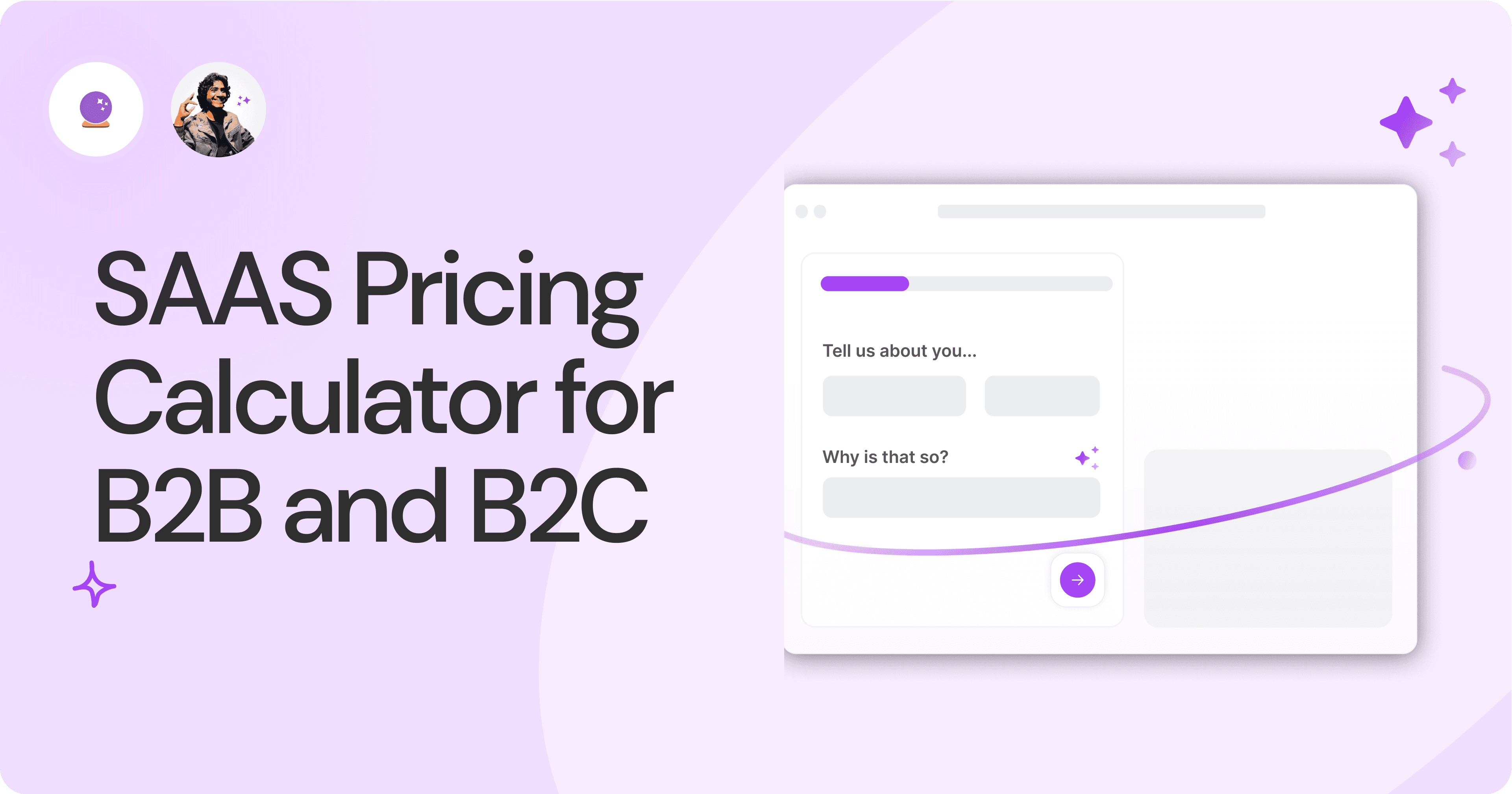
SAAS Pricing Calculators: B2B v B2C Online Forms.
The SaaS pricing calculator is an essential tool for both B2B and B2C SaaS companies. But how do you build it, right? We have you covered.
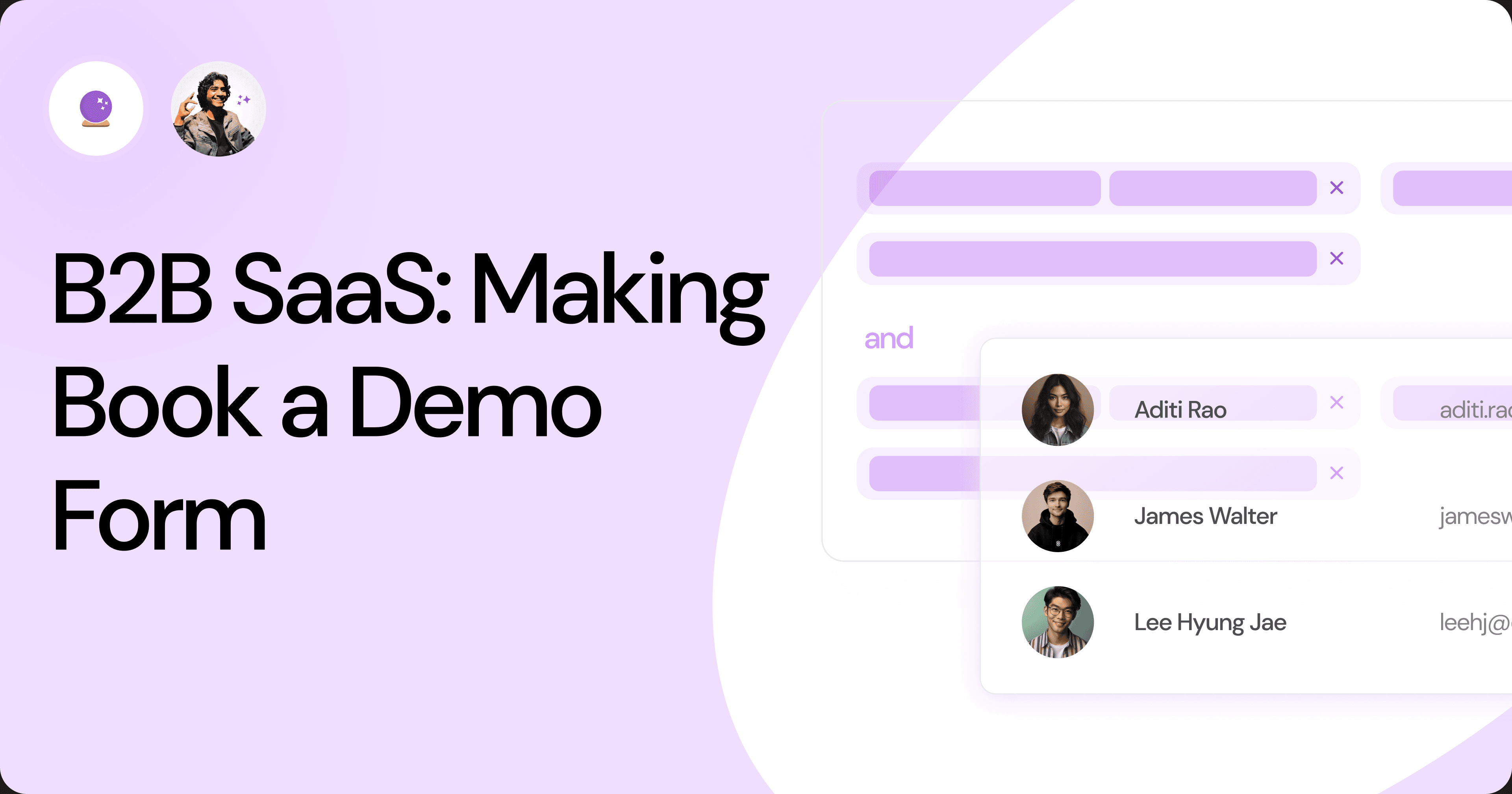
B2B SaaS: Making Book a Demo Form.
Having the perfect book a demo form for B2B SaaS is the first step in capturing leads. There are a few fundamental techniques to get this form right. Read on.
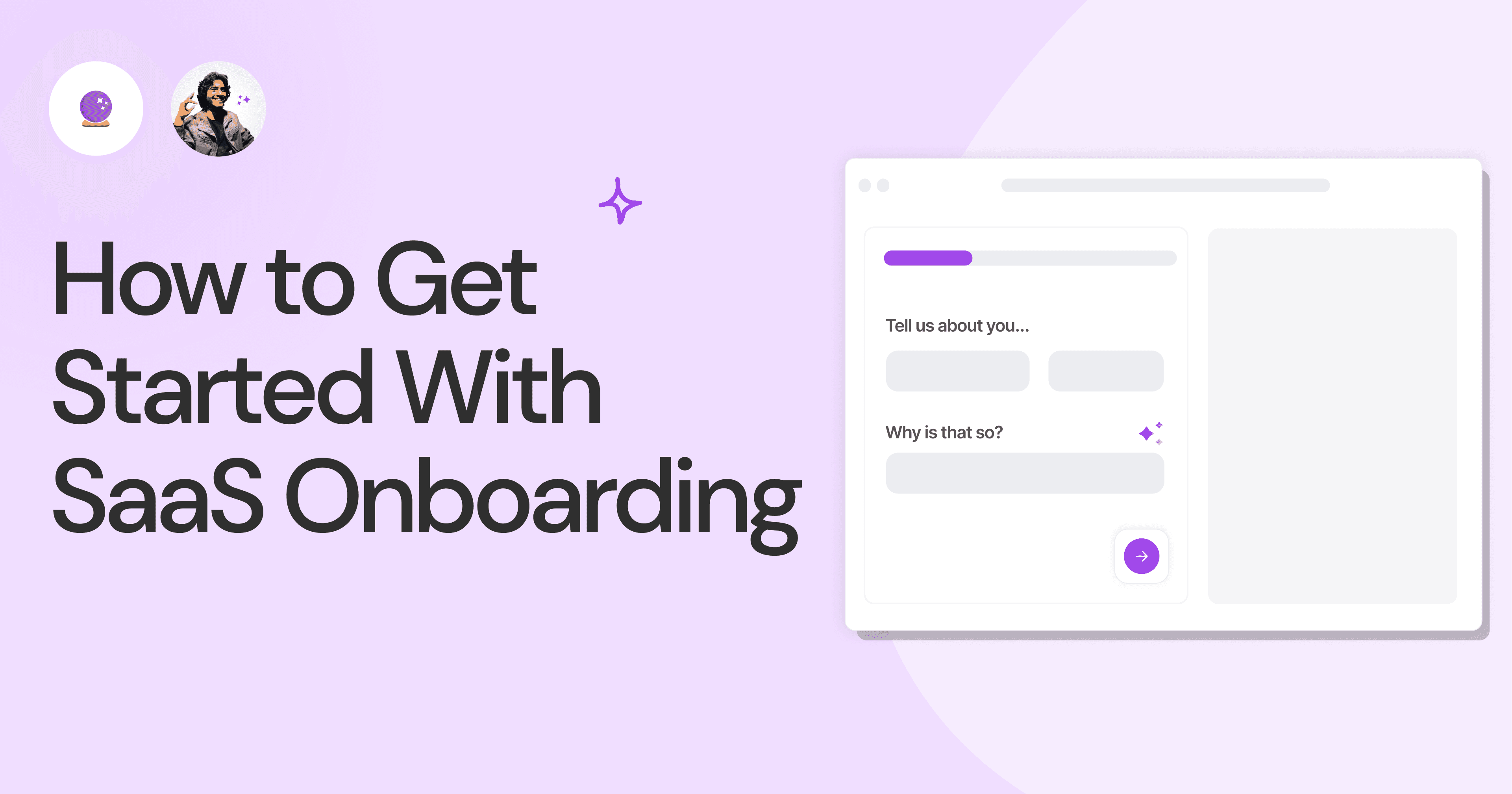
How to Get Started With SaaS Onboarding.
SaaS onboarding is essential for customer onboarding in B2B and B2C SaaS. Let’s understand its fundamentals, including the metrics.
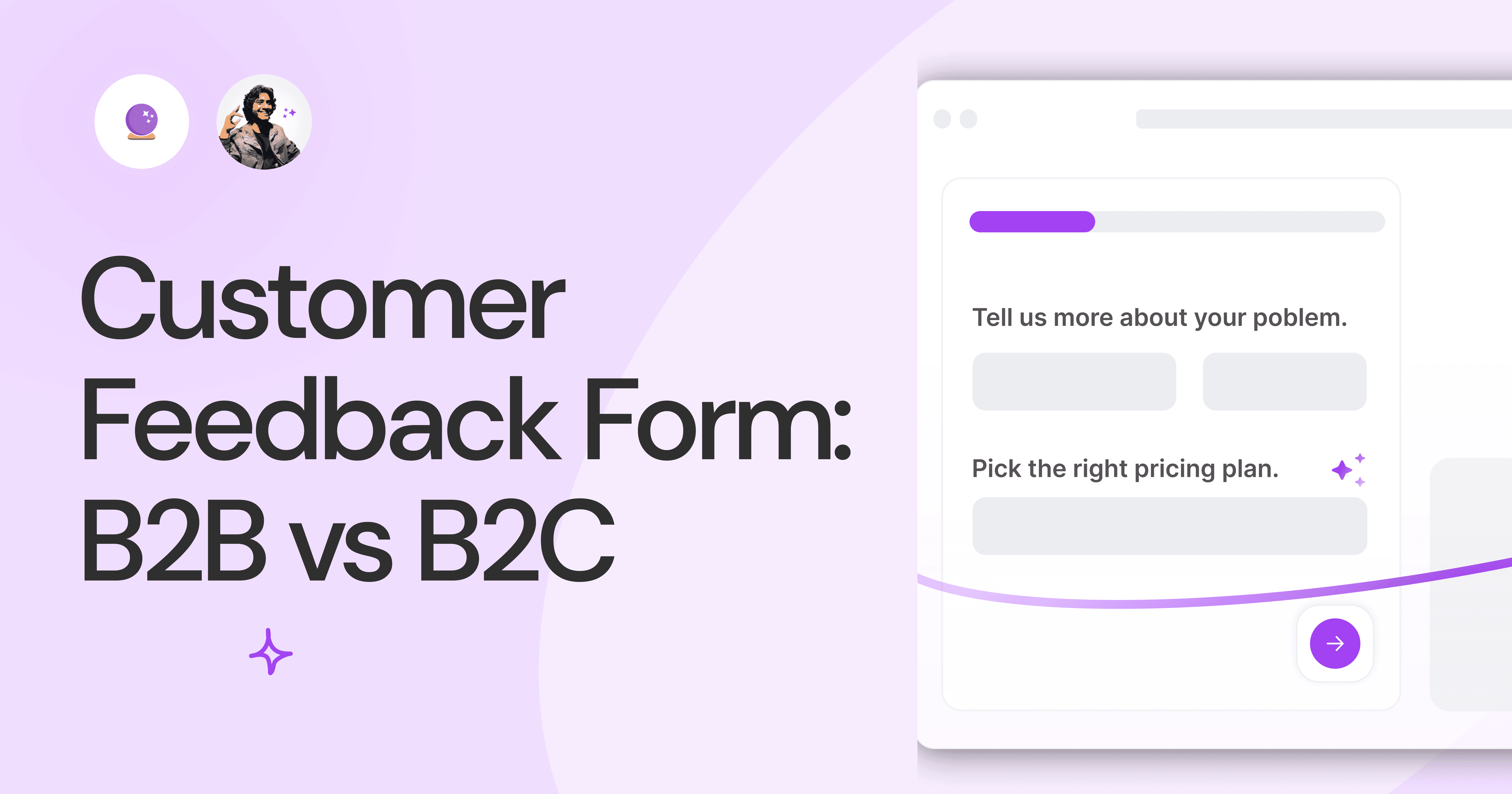
Customer Feedback Form: B2B vs B2C.
Why is customer feedback important? Because it dictates progress on B2B and B2B products and services for the customer to meet their goals.

SaaS Customer Feedback Form: 6 Main Types.
As much as SaaS is self-serve, the role of a customer feedback form is highly relevant. There are different types, each with its use case and sections.
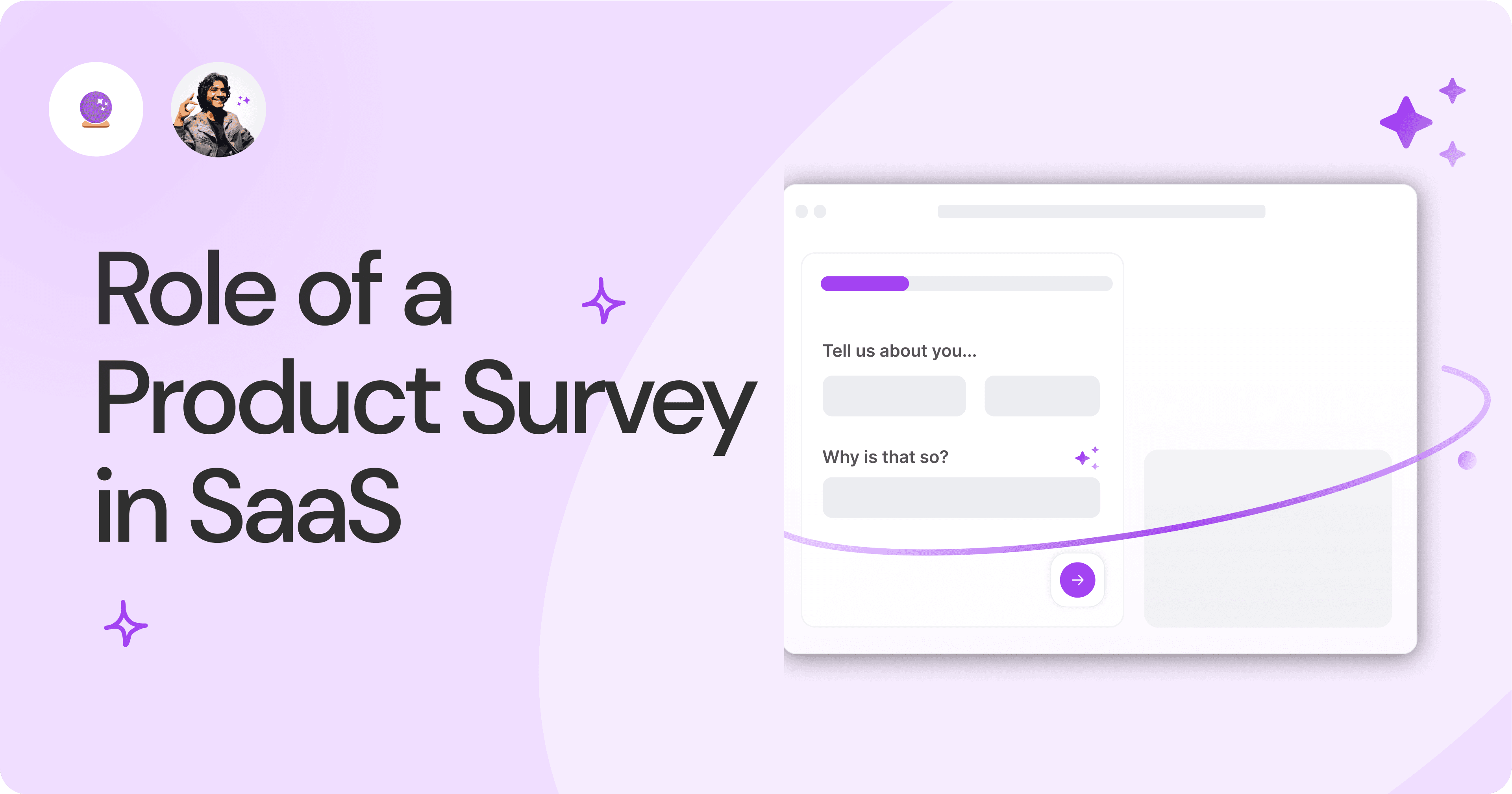
Role of a Product Survey in SaaS.
SaaS is all about creating products for specific use cases. This is where a product survey becomes all the more important to know the user deeply.

Should You Do a SaaS Market Survey?
Every SaaS company wants to grow fast. But without a market survey, growth isn't possible or sustainable. Let’s see how to do a market survey.

SAAS Pricing Calculators: B2B v B2C Online Forms.
The SaaS pricing calculator is an essential tool for both B2B and B2C SaaS companies. But how do you build it, right? We have you covered.

B2B SaaS: Making Book a Demo Form.
Having the perfect book a demo form for B2B SaaS is the first step in capturing leads. There are a few fundamental techniques to get this form right. Read on.

How to Get Started With SaaS Onboarding.
SaaS onboarding is essential for customer onboarding in B2B and B2C SaaS. Let’s understand its fundamentals, including the metrics.

Customer Feedback Form: B2B vs B2C.
Why is customer feedback important? Because it dictates progress on B2B and B2B products and services for the customer to meet their goals.

SaaS Customer Feedback Form: 6 Main Types.
As much as SaaS is self-serve, the role of a customer feedback form is highly relevant. There are different types, each with its use case and sections.

Role of a Product Survey in SaaS.
SaaS is all about creating products for specific use cases. This is where a product survey becomes all the more important to know the user deeply.

Should You Do a SaaS Market Survey?
Every SaaS company wants to grow fast. But without a market survey, growth isn't possible or sustainable. Let’s see how to do a market survey.

SAAS Pricing Calculators: B2B v B2C Online Forms.
The SaaS pricing calculator is an essential tool for both B2B and B2C SaaS companies. But how do you build it, right? We have you covered.

B2B SaaS: Making Book a Demo Form.
Having the perfect book a demo form for B2B SaaS is the first step in capturing leads. There are a few fundamental techniques to get this form right. Read on.

How to Get Started With SaaS Onboarding.
SaaS onboarding is essential for customer onboarding in B2B and B2C SaaS. Let’s understand its fundamentals, including the metrics.

Customer Feedback Form: B2B vs B2C.
Why is customer feedback important? Because it dictates progress on B2B and B2B products and services for the customer to meet their goals.

SaaS Customer Feedback Form: 6 Main Types.
As much as SaaS is self-serve, the role of a customer feedback form is highly relevant. There are different types, each with its use case and sections.

Role of a Product Survey in SaaS.
SaaS is all about creating products for specific use cases. This is where a product survey becomes all the more important to know the user deeply.

Should You Do a SaaS Market Survey?
Every SaaS company wants to grow fast. But without a market survey, growth isn't possible or sustainable. Let’s see how to do a market survey.

Nine Types of Healthcare and Medical Forms.
Medical forms are a must-have for any healthcare business or practitioner. Learn about the different kinds of medical and healthcare forms.

4 Tips for Better Medical History Forms.
Medical history forms are central to patient care, onboarding, and medical administration records. Learn how to make them easier to fill.

How to Build Mental Health Intake Forms?
Mental health intake forms are not like patient intake forms. Mental health intake forms deal with far more sensitive data and have specific design methods.

What, Why and How of Telemedicine Forms.
Telemedicine is on the rise and with different form builders out there, which one best suits your needs as a healthcare services provider?

3 Reasons for Major Drop-Offs in Medical Forms.
No matter which healthcare form we pick, there are major drop-off reasons. We shall dive into the top 3 and learn how to resolve them in your next form.

Patient Onboarding Forms - From Click to Clinic.
Patient onboarding forms are the first touchpoint for patients; getting this right for higher conversion rates is a must-have. Learn how to perfect them now.

5 Key Parts of a Good Patient Satisfaction Form.
The goal of patient satisfaction surveys is to course-correct the services of a healthcare provider. Patient feedback leads to a culture of patient-centric care.

Build Quick and Easy Medical Release Forms.
Every HIPAA-compliant healthcare provider comes across medical release forms that involve details from medical history forms. Can they be shipped fast? Yes.

SAAS Pricing Calculators: B2B v B2C Online Forms.
The SaaS pricing calculator is an essential tool for both B2B and B2C SaaS companies. But how do you build it, right? We have you covered.

B2B SaaS: Making Book a Demo Form.
Having the perfect book a demo form for B2B SaaS is the first step in capturing leads. There are a few fundamental techniques to get this form right. Read on.

How to Get Started With SaaS Onboarding.
SaaS onboarding is essential for customer onboarding in B2B and B2C SaaS. Let’s understand its fundamentals, including the metrics.

Customer Feedback Form: B2B vs B2C.
Why is customer feedback important? Because it dictates progress on B2B and B2B products and services for the customer to meet their goals.

SaaS Customer Feedback Form: 6 Main Types.
As much as SaaS is self-serve, the role of a customer feedback form is highly relevant. There are different types, each with its use case and sections.

Role of a Product Survey in SaaS.
SaaS is all about creating products for specific use cases. This is where a product survey becomes all the more important to know the user deeply.

Should You Do a SaaS Market Survey?
Every SaaS company wants to grow fast. But without a market survey, growth isn't possible or sustainable. Let’s see how to do a market survey.
Subscribe to stay updated.
Subscribe to stay updated.
Subscribe to stay updated.
HC

HC

HC

HC

70+ people from across industries read our emails.
HC

HC

70+ people from across industries read our emails.
HC

HC

HC

70+ people from across industries read our emails.




Bangalore, India / San Francisco, US
WorkHack Inc. 2023
Bangalore, India
San Francisco, US
WorkHack Inc. 2023
WorkHack Inc. 2023
Bangalore, India / San Francisco, US
WorkHack Inc. 2023
Bangalore, India / San Francisco, US



